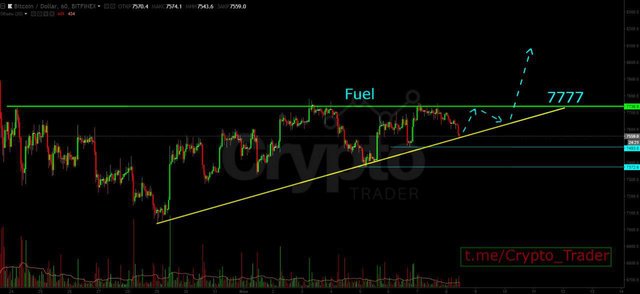
A triangle with a flat top is formed on the chart. The price is in the flat with rising lows - the price is pressed to the level of 7777. The further development of events depends on how we break through this level. The fact is that now many traders open short positions, and put the stop-loss just above the level of 7777. And as you know, the stop-loss of the short-player is a purchase. After the penetration of the level of 7777 takes place - we can fly up on these stop-loss (purchases). But there is another side. Very often, large players use this to set their own position - they can specifically buy a little to push the price for the level and thereby provoke an avalanche of purchases. And at this time, these same big players will substitute their limit orders for sale - because only in this way you can sell immediately and a lot. As a result, they will keep the price rise, and the break-through on the result will be false. With their sales, they will swallow all the demand and we'll go down.
In general, we need to carefully look at how the level of 7777 will break through. If the breakout is confident and we manage to gain a foothold over this level, then large players do not prevent the price from growing, and we will go further up. Otherwise, if after the breakdown there is a very high volume and we jump sharply back - then the breakout was false and we are going down. Personally, I tend to the first option - it seems to me that during the flute a large player was gaining a big purchase at the expense of those who shorted - and after the penetration of the level of 7777 we will fly up at their feet.
Reference:
Short, or short position - is when a trader takes a coin from a stock exchange in debt and immediately sells it, in order to buy back cheaper. Coins are then given to the exchange, and the earned difference goes to the trader in his pocket. Thus, you can earn on the fall of the course.